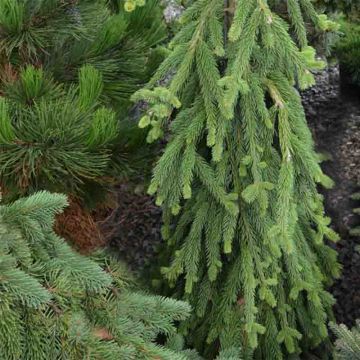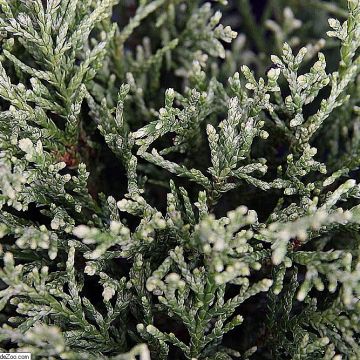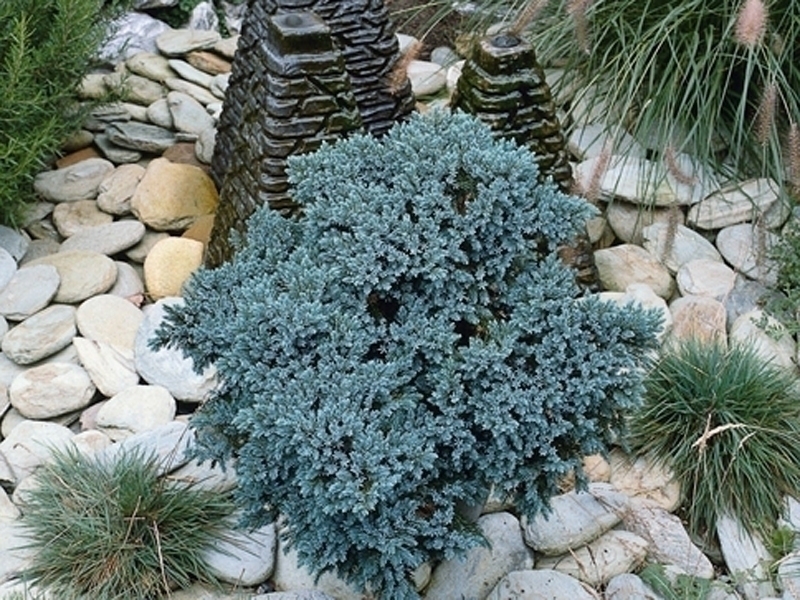

Sequoiadendron giganteum


Sequoiadendron giganteum


Sequoiadendron giganteum


Sequoiadendron giganteum
Sequoiadendron giganteum
Sequoiadendron giganteum
Giant Sequoia, Giant Redwood, Sierra Redwood, Wellingtonia
Hello, the delivery has arrived but the young plant was in the box with the roots exposed without any protection, they don't seem to have been affected at first sight, we immediately put it in a pot until it can be planted. This is the first time I receive a delivery in this condition.
Cedric, 05/03/2022
Special offer!
Receive a €20 voucher for any order over €90 (excluding delivery costs, credit notes, and plastic-free options)!
1- Add your favorite plants to your cart.
2- Once you have reached €90, confirm your order (you can even choose the delivery date!).
3- As soon as your order is shipped, you will receive an email containing your voucher code, valid for 3 months (90 days).
Your voucher is unique and can only be used once, for any order with a minimum value of €20, excluding delivery costs.
Can be combined with other current offers, non-divisible and non-refundable.
Home or relay delivery (depending on size and destination)
Schedule delivery date,
and select date in basket
This plant carries a 24 months recovery warranty
More information
We guarantee the quality of our plants for a full growing cycle, and will replace at our expense any plant that fails to recover under normal climatic and planting conditions.
Would this plant suit my garden?
Set up your Plantfit profile →
Description
The Sequoiadendron giganteum, also known as the American giant sequoia, should not be confused with the Metasequoia, which is smaller and of Asian origin. This iconic conifer from the western slopes of the Sierra Nevada in California is famous for its phenomenal size and longevity. For many years, it grows taller than it does wide, displaying a narrow pyramidal habit supported by a massive, upright trunk with deep, reddish-brown fibrous bark. It expands with age, extending its trailing branches in a graceful movement that guides them towards the sky. A true botanical monument, it requires a garden large enough to accommodate its massive growth, especially considering it will outlive many generations of gardeners!
The Sequoiadendron giganteum is a conifer of the taxodiaceae family, native to North America, specifically the humid slopes of the Sierra Nevada mountains in California. Fossils indicate the presence of sequoias in Europe before the major glaciations of the Quaternary period. In its natural habitat, under favourable conditions, it can reach a height of 50 to 85 m (164 to 279ft) with a spread of 8 to 10 m, developing a massive pyramidal habit. This species exhibits fairly rapid growth and thrives in cool, rainy climates, with hot summers and snowy winters that provide excellent protection for its roots and young plants.
This highly ornamental conifer initially displays a narrow, conical pyramidal habit, which widens after many years. Its main branches are slightly trailing, with upright tips, covered in narrow, triangular, sharp needles measuring 1 to 1.2 cm (1in) in length, resembling those of cypresses. On young shoots, they measure between 0.3 and 0.6 cm (1in). This plant is monoecious, meaning it has both male and female parts. When the female cones are pollinated, they become ovoid, reddish-brown, and upright. They mature in two years. Its trunk is a colossal pillar that takes on a fascinating appearance over time. The bark of this sequoia is remarkable, with its reddish hue, resistance to fire and fungal attacks, and the deep burls and decorative cracks that form with age. This plant has an extensive but surprisingly shallow root system, making transplantation somewhat delicate, but allowing it to draw on the soil's nutritional and water resources. This characteristic also makes it vulnerable to strong winds, especially in loose soil.
The Sequoiadendron giganteum should be planted in a garden large enough to accommodate it. Under suitable conditions, it becomes an exceptional tree that will make the gardener who planted it proud, and will undoubtedly outlive them, becoming a part of a family's and garden's history. It can be planted as a focal point or as a hedge at the edge of the countryside, placed in front of a curtain of Phyllostachys bambusoides, the giant bamboo. Such a massive tree requires a solid base; its location should be carefully chosen, with deep soil and a well-exposed but sheltered position to prevent it from being toppled by the wind. It requires little to no maintenance after the first few years and pairs well with large stones, geometric pool designs, and masonry works. This legendary tree also finds its place in contemporary or exotic-inspired gardens.
Sequoiadendron giganteum in pictures


Plant habit
Foliage
Botanical data
Sequoiadendron
giganteum
Taxodiaceae
Giant Sequoia, Giant Redwood, Sierra Redwood, Wellingtonia
North America
Other Conifers A to Z
View all →Planting and care
The Sequoiadendron giganteum is planted from September to November and from February to June in deep, light, well-drained soil, close to neutrality, slightly chalky or slightly acidic, preferably fertile. While it tolerates clay soils, it prefers loose, loamy or sandy soils that are not too chalky or acidic. Choose a sunny and open location, sheltered from strong winds, away from buildings, and slightly more shaded in hot climates to provide some protection from heat during its young years. Soak the root balls well before planting. Add an organic base fertiliser when planting and water generously for the first three years and during prolonged droughts. In poor soil, you can apply a special conifer fertiliser every 2 years in April. Hoe the ground in summer. This hardy conifer (up to -15°C (5°F) at least) is sensitive to waterlogged soils in winter, alkaline and overly dry soils, even though it tolerates occasional summer drought once well established. Pruning is not necessary.
Planting period
Intended location
Care
Planting & care advice
-
, onOrder confirmed
Reply from on Promesse de fleurs
Similar products
Haven't found what you were looking for?
Hardiness is the lowest winter temperature a plant can endure without suffering serious damage or even dying. However, hardiness is affected by location (a sheltered area, such as a patio), protection (winter cover) and soil type (hardiness is improved by well-drained soil).

Photo Sharing Terms & Conditions
In order to encourage gardeners to interact and share their experiences, Promesse de fleurs offers various media enabling content to be uploaded onto its Site - in particular via the ‘Photo sharing’ module.
The User agrees to refrain from:
- Posting any content that is illegal, prejudicial, insulting, racist, inciteful to hatred, revisionist, contrary to public decency, that infringes on privacy or on the privacy rights of third parties, in particular the publicity rights of persons and goods, intellectual property rights, or the right to privacy.
- Submitting content on behalf of a third party;
- Impersonate the identity of a third party and/or publish any personal information about a third party;
In general, the User undertakes to refrain from any unethical behaviour.
All Content (in particular text, comments, files, images, photos, videos, creative works, etc.), which may be subject to property or intellectual property rights, image or other private rights, shall remain the property of the User, subject to the limited rights granted by the terms of the licence granted by Promesse de fleurs as stated below. Users are at liberty to publish or not to publish such Content on the Site, notably via the ‘Photo Sharing’ facility, and accept that this Content shall be made public and freely accessible, notably on the Internet.
Users further acknowledge, undertake to have ,and guarantee that they hold all necessary rights and permissions to publish such material on the Site, in particular with regard to the legislation in force pertaining to any privacy, property, intellectual property, image, or contractual rights, or rights of any other nature. By publishing such Content on the Site, Users acknowledge accepting full liability as publishers of the Content within the meaning of the law, and grant Promesse de fleurs, free of charge, an inclusive, worldwide licence for the said Content for the entire duration of its publication, including all reproduction, representation, up/downloading, displaying, performing, transmission, and storage rights.
Users also grant permission for their name to be linked to the Content and accept that this link may not always be made available.
By engaging in posting material, Users consent to their Content becoming automatically accessible on the Internet, in particular on other sites and/or blogs and/or web pages of the Promesse de fleurs site, including in particular social pages and the Promesse de fleurs catalogue.
Users may secure the removal of entrusted content free of charge by issuing a simple request via our contact form.
The flowering period indicated on our website applies to countries and regions located in USDA zone 8 (France, the United Kingdom, Ireland, the Netherlands, etc.)
It will vary according to where you live:
- In zones 9 to 10 (Italy, Spain, Greece, etc.), flowering will occur about 2 to 4 weeks earlier.
- In zones 6 to 7 (Germany, Poland, Slovenia, and lower mountainous regions), flowering will be delayed by 2 to 3 weeks.
- In zone 5 (Central Europe, Scandinavia), blooming will be delayed by 3 to 5 weeks.
In temperate climates, pruning of spring-flowering shrubs (forsythia, spireas, etc.) should be done just after flowering.
Pruning of summer-flowering shrubs (Indian Lilac, Perovskia, etc.) can be done in winter or spring.
In cold regions as well as with frost-sensitive plants, avoid pruning too early when severe frosts may still occur.
The planting period indicated on our website applies to countries and regions located in USDA zone 8 (France, United Kingdom, Ireland, Netherlands).
It will vary according to where you live:
- In Mediterranean zones (Marseille, Madrid, Milan, etc.), autumn and winter are the best planting periods.
- In continental zones (Strasbourg, Munich, Vienna, etc.), delay planting by 2 to 3 weeks in spring and bring it forward by 2 to 4 weeks in autumn.
- In mountainous regions (the Alps, Pyrenees, Carpathians, etc.), it is best to plant in late spring (May-June) or late summer (August-September).
The harvesting period indicated on our website applies to countries and regions in USDA zone 8 (France, England, Ireland, the Netherlands).
In colder areas (Scandinavia, Poland, Austria...) fruit and vegetable harvests are likely to be delayed by 3-4 weeks.
In warmer areas (Italy, Spain, Greece, etc.), harvesting will probably take place earlier, depending on weather conditions.
The sowing periods indicated on our website apply to countries and regions within USDA Zone 8 (France, UK, Ireland, Netherlands).
In colder areas (Scandinavia, Poland, Austria...), delay any outdoor sowing by 3-4 weeks, or sow under glass.
In warmer climes (Italy, Spain, Greece, etc.), bring outdoor sowing forward by a few weeks.



























































